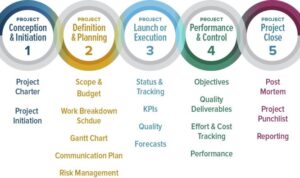Managing Customer Complaints sets the stage for effective business practices, outlining key strategies and approaches to ensure customer satisfaction and business growth.
In today’s competitive market, the ability to handle customer complaints with finesse can make or break a business.
Overview of Managing Customer Complaints
Customer complaints in a business context refer to feedback or expressions of dissatisfaction from customers regarding products or services provided by a company. These complaints can range from issues with product quality, delivery delays, poor customer service, billing errors, or any other aspect that fails to meet customer expectations.
Effectively managing customer complaints is crucial for business success as it allows companies to address and resolve issues promptly, leading to increased customer satisfaction and loyalty. By listening to customer feedback and taking necessary actions to address complaints, businesses can improve their products or services, build stronger relationships with customers, and enhance their reputation in the market.
Ignoring or mishandling customer complaints can have severe consequences for businesses. It can result in dissatisfied customers spreading negative word-of-mouth, damaging the company’s reputation, and leading to loss of customers and revenue. Furthermore, unresolved complaints can escalate into formal disputes, legal actions, or regulatory investigations, causing significant harm to the business’s bottom line and brand image.
Importance of Addressing Customer Complaints
- Enhances customer satisfaction and loyalty
- Improves products or services based on customer feedback
- Builds trust and credibility with customers
- Prevents negative word-of-mouth and protects company reputation
- Identifies areas for improvement and business growth
Strategies for Handling Customer Complaints

Effective handling of customer complaints is crucial for maintaining customer satisfaction and loyalty. Here are some common strategies that can help businesses address customer complaints efficiently:
Active Listening
Active listening is a key component of effective customer complaint management. It involves fully concentrating on what the customer is saying, understanding their concerns, and responding appropriately. By actively listening to customers, businesses can demonstrate empathy and show that they value their feedback.
- Listen attentively to the customer without interrupting.
- Repeat back key points to ensure understanding.
- Show empathy and understanding towards the customer’s situation.
- Acknowledge their feelings and concerns.
Empathy in Resolving Complaints, Managing Customer Complaints
Empathy plays a crucial role in resolving customer complaints as it helps businesses connect with customers on a more emotional level. By putting themselves in the customer’s shoes and understanding their perspective, businesses can address complaints more effectively.
- Acknowledge the customer’s feelings and apologize sincerely.
- Show genuine concern for the customer’s experience.
- Offer solutions that address the customer’s needs and concerns.
- Follow up with the customer to ensure their satisfaction.
Implementing a Customer Complaint Resolution Process
Creating a structured customer complaint resolution process is crucial for effectively addressing customer issues and improving overall satisfaction. This process typically involves several key steps to ensure complaints are handled efficiently and effectively.
Role of Communication in Managing Customer Complaints
Effective communication plays a vital role in managing customer complaints. It is essential to listen actively to the customer’s concerns, show empathy, and provide clear and transparent information throughout the resolution process. Open lines of communication help build trust and demonstrate a commitment to addressing the issue at hand.
Best Practices for Documenting and Tracking Customer Complaints
To effectively document and track customer complaints, it is important to have a centralized system in place. This system should capture key details such as the nature of the complaint, the customer’s information, the date and time of the complaint, and any actions taken to resolve the issue. By maintaining detailed records, businesses can identify common issues, track trends, and continuously improve their complaint resolution process.
Dealing with Difficult Customers: Managing Customer Complaints

Dealing with difficult customers can be a challenging aspect of customer service, but it is crucial to handle these situations effectively to maintain customer satisfaction and loyalty. It is important to approach each interaction with a positive attitude and a willingness to resolve the issue in a professional manner.
Identifying Different Types of Difficult Customers
- Angry Customers: These customers may be upset due to a negative experience and may express their frustration through harsh language or behavior. It is essential to remain calm and empathetic while addressing their concerns.
- Indecisive Customers: Some customers may have difficulty making decisions or may constantly change their minds. It is important to be patient and provide clear guidance to help them come to a resolution.
- Demanding Customers: These customers have high expectations and may require extra attention or special treatment. It is important to listen to their needs and offer solutions that meet their expectations.
Maintaining a Positive Attitude
“The way you respond to difficult customers can greatly impact their perception of your business. Stay positive and focus on finding solutions to their problems.”
Strategies for De-escalating Tense Situations
- Active Listening: Pay close attention to the customer’s concerns and show empathy towards their situation.
- Stay Calm: Maintain a calm demeanor and avoid reacting emotionally to the customer’s behavior.
- Offer Solutions: Propose solutions or alternatives to resolve the issue and ensure customer satisfaction.





